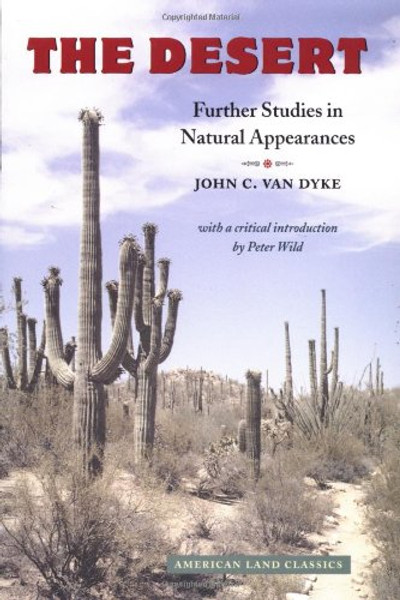Product Overview
Since its first appearance in 1901, John C. Van Dyke's The Desert has been considered one of the classics of American nature writing. Before its publication, Americans thought of deserts as scorpion-infested wastelandswith names like Devil's Domain and the Lands That God Forgot. All this changed as The Desert drew attention to the extraordinary beauty that existed in the American West: rolling sand dunes, golden vistas, vibrant sunsets, and remarkable plant and animal life. Van Dyke's book captured the nation's imagination at a time when attitudes about the land were changing. It provided a vocabulary that continues to be used as appreciation of deserts increases and ever greater pressures lead to new calls to protect these fragile environments.
With a critical introduction by Peter Wild, this edition offers new insightsand reveals some surprising truthsabout this legendary author and his best known work. Van Dyke was not, it seems, the plaster saint of the desert. He was not entirely honest with his readers about the journeys that inspired the book, and his natural history includes serious errors. But in this more informed reading, Wild notes, Van Dyke emerges as all the more fascinating a writer and his famous book becomes far more intriguing than most readers have imagined through the decades. As the centennial of its publication approaches and the complex story behind its long success is finally told, this new edition of The Desert reveals an equally complex and dramatic narrative: our changing relationship with the American landscape.
Van Dyke came at just the right time... No sooner had Americans conquered the wilderness, cut down the forests, and slaughtered the buffalo than the romantic nation began sentimentalizing the past, longing for what it had just destroyed. from the Introduction






